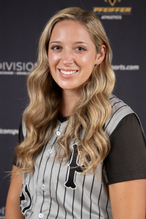NCAA Tournament: No more cinderellas
Published 12:00 am Tuesday, March 29, 2011
By Jim Litke
Associated Press
The NCAA tournament is at a tipping point.
The old model of a dozen or so tradition-rich programs from the six power conferences fighting among themselves for the title year after year is on its last legs. If neither of the so-called mid-majors playing in Saturday’s first semifinal, Butler or Virginia Commonwealth, break that stranglehold this year, one of their counterparts will soon enough.
Already, upsets don’t mean nearly as much as they once did. Seedings mean even less.
“There aren’t any weak sisters,” Hall of Fame coach and current ESPN analyst Bob Knight said before Sunday’s games. “I don’t care if they came from the Canary Island League. Anybody that gets here is going to be able to play.”
VCU emerged from the not-quite-as-exotic Colonial Athletic Association, the same league that sprung Final Four party crasher George Mason five years ago. And it only seems as if the Rams began their tournament run on the other side of the world.
Instead, since kicking open the door in the newly added “First Four” round of games as a No. 11 seed, they’ve faced opponents from five of the six power conferences — only the SEC has been lucky enough to avoid a battering — and haven’t looked overmatched in a single one.
After his No. 1 Jayhawks lost 71-61, Kansas coach Bill Self said if the players from both sides were sprinkled into a shirts vs. skins game, it would be impossible to tell which ones had the supposed pedigree.
“They got what they deserved today,” he said about the Rams. “They certainly outplayed us.”
VCU’s win may have overshadowed an even more impressive accomplishment by Butler, a school with 4,500 students that returned to the Final Four after losing to Duke last year, when a half-court shot by since-departed NBA pick Gordon Hayward at the buzzer missed by inches. No team outside the six power conferences has done that since UNLV in 1990-91, but the way the two programs arrived at the same place couldn’t be much different or more reflective of the eras.
Back then, UNLV was an NBA team-in-waiting, much like perennial powers North Carolina, Kansas and Kentucky, loaded with veteran talent. In the intervening years, the kids that used to stack up at those programs began jumping to the NBA after a season or two, or fanned out to smaller schools where they cashed in on opportunities to play right away and get the TV exposure once reserved for the big leagues.
As more dollars trickled down to midlevel programs, bright young coaches such as Butler’s Brad Stevens, 34, and VCU’s Shaka Smart, 33, took advantage of the same shortcuts. What they quickly figured out was that continuity — keeping second-tier players together for several seasons — was the fastest way to close the talent gap, especially in the tournament.
Butler and VCU likely couldn’t beat Kansas and Florida, to name just their past two opponents, in a best-of-three series. But in the lose-and-go-home format, they only have to figure out a way to do it once.
Kentucky coach John Calipari, whose No. 4 Wildcats play No. 3 Connecticut in the other semifinal, keeps getting results by recruiting the most-talented one-and-done players available and reloading season after season, but he’s an exception. This season’s UConn team is more of a hybrid, led by late-blooming junior guard Kemba Walker, with several freshmen sharing the load.
What all four squads have proved by taking different approaches is the seeding process that consumes so much of the NCAA selection committee’s time and the media’s attention is becoming irrelevant.
There are no No. 1 or 2 seeds for the first time since seeding was used in 1979, when the tournament was expanded to 40 teams and the rankings put in place to give teams in the 1-6 slots a bye for the first round. Though it’s not as exact a comparison because of all the conference shifts since 1979, this year was also the first time that two teams outside the power leagues have made the Final Four.
The only way those numbers don’t increase with each passing year is this: While college basketball’s royalty is having trouble keeping its best players for long, the mid-majors just arriving may find it equally tough to hang onto the best young coaches such as Stevens and Smart. No doubt some of the teams filling out the lower rungs in the power leagues are already drafting offers.
Small wonder those same vested interests cling to power so desperately in college football, using the Bowl Championship Series to stack the deck in the postseason. Otherwise, the anarchy that has made this already the most unpredictable playoff ever could spread like wildfire.





